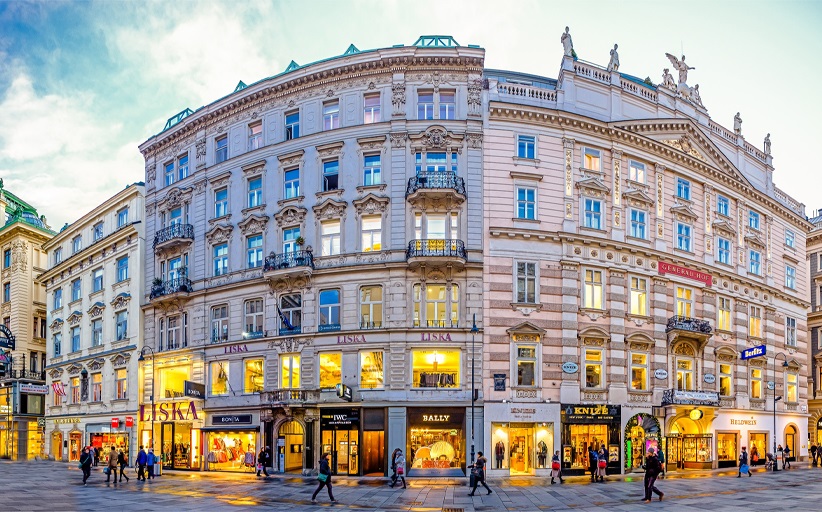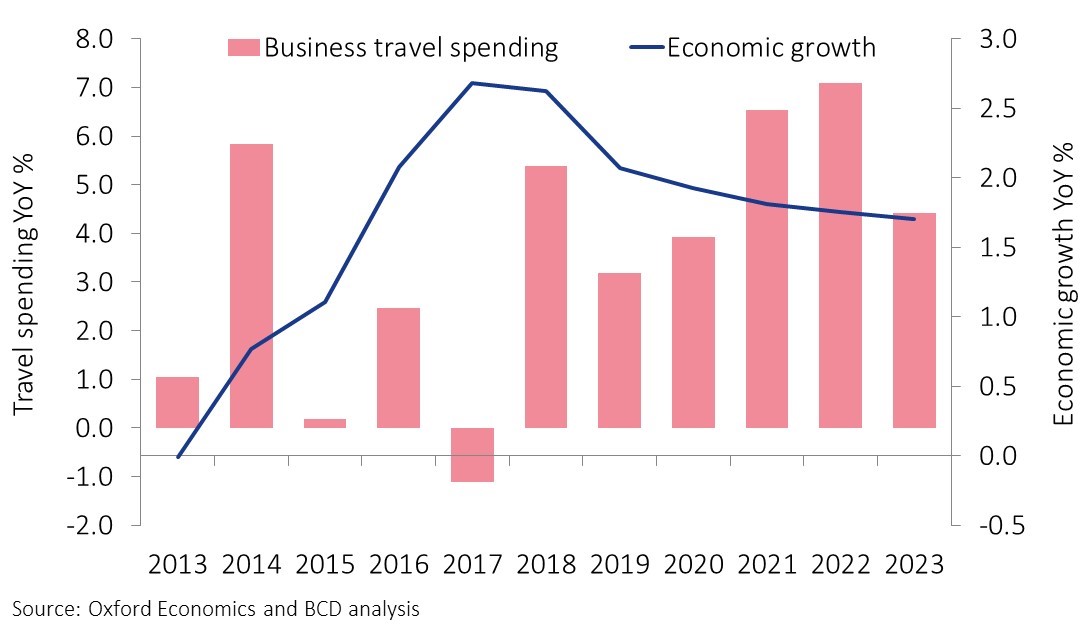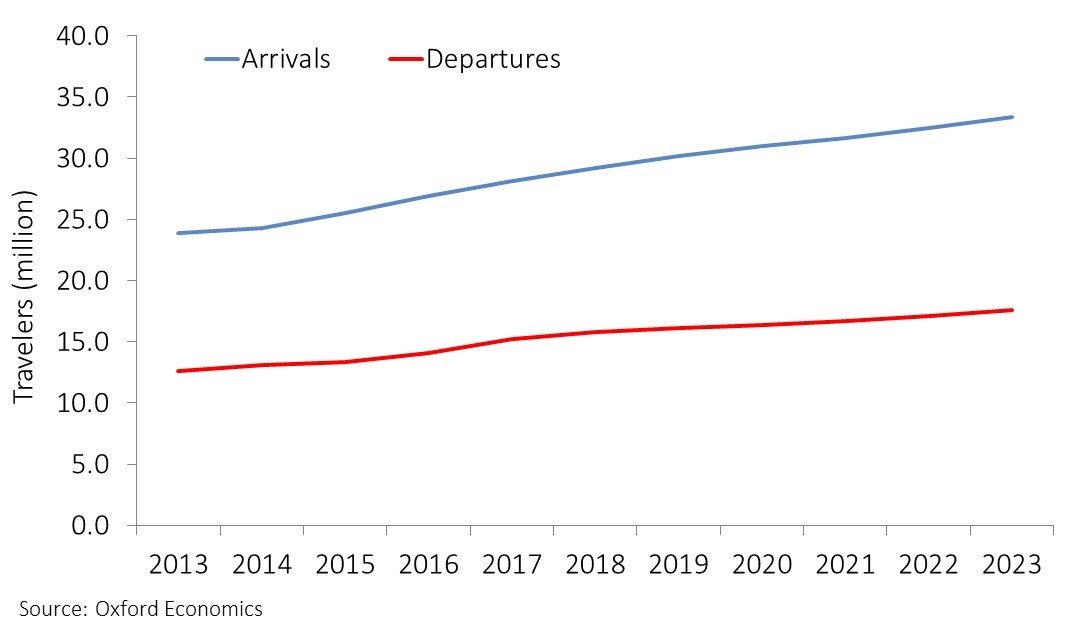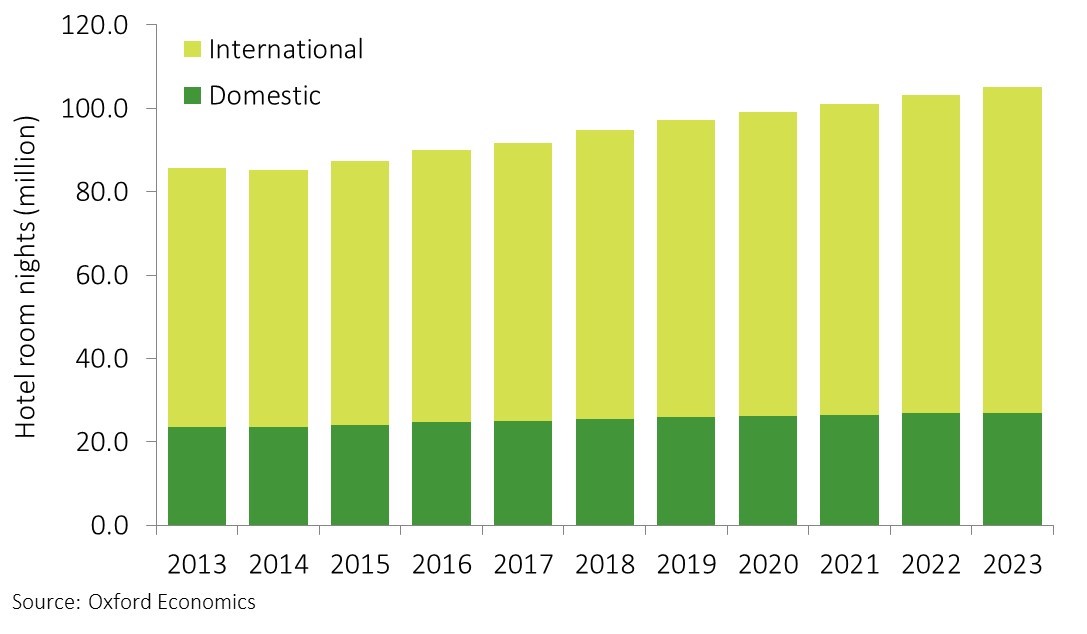
Most visitors come from Germany, but arrivals from China are on the upswing.
In 2018, companies spent almost US$13 billion (€11 billion) on travel to, from and within Austria. Inbound travel made up 42% of that spending. Domestic travel accounted for 31%; outbound trips made up 27% of spending. Between 2013 and 2018, spending on international trips increased 2.5% a year, on average. But that masks volatility: Growth was 6% in 2014 and -1% in 2017. Future growth is more positive. Oxford Economics forecasts average annual growth of 5% through 2023 with all travel segments expanding at similar rates.
Download the 2019 Industry Forecast, with region-specific reports and infographics available in six languages. Ask how BCD Travel can help you get travelers to emerging and established markets all over the world.
Economic environment
Economic growth and business travel spending
Click on image to enlarge
- With a gross domestic product of US$420 billion in 2017, Austria is Europe’s 13th-largest economy. Oxford Economics ranks it between Belgium and Norway.
- Services account for most economic activity. Government spending accounts for just under 50% of GDP.
- The government plays a major role in the economy. It embarked on a privatization program in the 1990s but still controls a number of companies.
- Slowing global trade and higher inflation slowed growth in 2018. Yet the Austrian labor market is strong, and resilient consumer confidence drives domestic demand.
- Austria’s economy was flat in 2013 then steadily expanded, peaking at 2.7% in 2017. Growth was an estimated 2.6% in 2018, and economists expect pressures on exports and investment to slow growth to 2.1% in 2019.
Air
International travel
Click on image to enlarge
- Excluding daytrips, international travel to and from Austria increased by 23% between 2013 and 2018 to almost 45 million journeys a year.
- Germany is Austria’s single most important inbound market, accounting for 48% of international arrivals in 2018. The Netherlands and Switzerland are the next-biggest originating markets.
- The number of Chinese visitors is expected to increase 7% per year through 2023, outpacing growth in arrivals from other markets.
- Italy is the most popular destination for Austrian travelers, with a 24% share of overnight trips in 2018. Germany follows with 13%, and Croatia and Hungary each make up 9%. Travel to these destinations is expected to increase 0% to 3% per year through 2022.
- Lufthansa Group, including local subsidiary Austrian Airlines and low-cost division Eurowings, dominates air travel. Across Austria’s six main airports, its departure share ranges from 50% at Innsbruck to 100% at Linz.
- Competition intensified in Vienna last year with the launch of low-cost operations by Laudamotion and Level.
- Air travel demand increased by 4.5% in 2017, well above the 1% to 2% growth of recent years. The Salzburg and Innsbruck markets saw some of the strongest growth.
Accommodation
Hotel demand
Click on image to enlarge
- Demand for hotel accommodation in Austria increased 10% between 2013 and 2018, rising from 86 million room nights to almost 95 million.
- International travelers dominate demand, typically accounting for around three-quarters of hotel business.
- Through 2023, annual growth in room demand is forecast to remain modest at around 2% per year.
- German travelers account for more than half of international demand. The Netherlands is the only other significant source of demand, with a 10% share.
- Growth in demand from both countries is predicted to be weak through 2023. Austrian hotels can expect a more significant increase in rooms taken by travelers arriving from Poland and China, whose numbers will increase by 8% to 9% a year through 2023.
- Chain hotels account for 14% of the 1,720 properties currently operating in Austria.
- With 36 hotels, AccorHotels offers the largest portfolio. It operates in all service tiers, although most properties are in the midscale (ibis/ibis Styles) and upper midscale (Mercure) tiers. Local operator Austria Trend is the market’s second-biggest chain, operating 25 hotels.
- Average daily rates (ADRs) should move within a 0% to 2% range in 2019, according to BCD Travel’s Industry Forecast.




